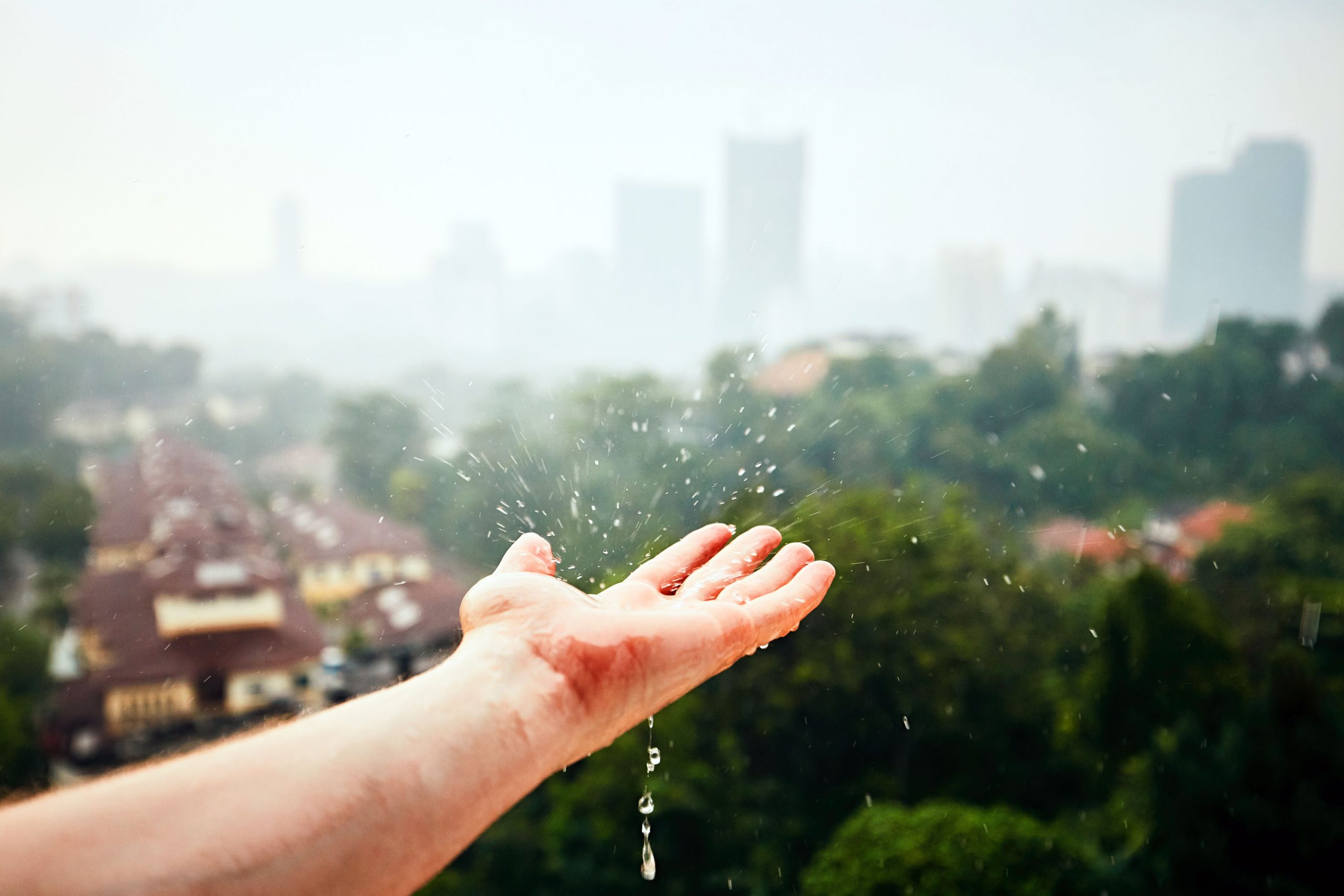You can usually drink rain straight from the sky, but if you’re collecting and storing it, you’ll want to disinfect rainwater for drinking and cleaning. Fortunately, there are simple disinfection methods to use, whether you have power or not. This is handy information to know in case you’re stuck after a storm without water or you’re out camping. The same techniques can be used to prepare snow for drinking, too.
Quick Methods to Disinfect Water
- Boiling: Reduce pathogens by boiling water for 1 minute at a rolling boil or 3 minutes if you’re at an altitude greater than 2,000 meters (6,562 feet). The longer boiling time at high altitudes is because water boils at a lower temperature. The recommended duration comes from the Centers for Disease Control (CDC). If you store freshly boiled water in sterile containers (which can be boiled) and seal them, the water will remain safe indefinitely.
- Bleach: For disinfection, add 2.3 fluid ounces of household bleach (sodium hypochlorite in water) per 1,000 gallons of water (in other words, for a small volume of water, a splash of bleach is more than sufficient). Allow 30 minutes for the chemicals to react. It may seem obvious, but use unscented bleach since the scented sort includes perfumes and other undesirable chemicals. Bleach dosage is not a hard-and-fast rule because its effectiveness depends on the temperature of the water and pH. Also, be aware that bleach may react with chemicals in the water to produce toxic gases (mostly a concern with turbid or cloudy water). It’s not ideal to add bleach to water and immediately seal it in containers; it’s better to wait for any fumes to dissipate. Although drinking straight bleach is dangerous, the small concentration used to disinfect water isn’t likely to cause problems. Bleach dissipates within 24 hours.
Why Disinfect Rainwater
The point of disinfection is to remove disease-causing microbes, which include bacteria, algae, and fungi. Rain generally doesn’t contain any more microbes than any other drinking water (it’s often cleaner than groundwater or surface water), so it’s usually fine to drink or use for other purposes. If the water falls into a clean cistern or bucket, it’s still fine. In fact, most people who collect rainwater use it without applying any treatment. Microbial contamination of rain is less of a threat than toxins that might be in the water from surfaces it touched. However, those toxins require filtration or special treatment. What we’re talking about here is pure rain. Technically, you don’t have to disinfect it, but most public agencies recommend taking the extra precaution to prevent illness.
Ways to Disinfect Water
There are four broad categories of disinfection methods: heat, filtration, irradiation, and chemical methods.
- Boiling water is an excellent method, but obviously, it only helps if you have a heat source. Boiling water can kill some pathogens, but it does not remove heavy metals, nitrate, pesticides, or other chemical contamination.
- Chlorine, iodine, and ozone are most often used for chemical disinfection. Chlorination can leave potentially toxic by-products, plus it doesn’t kill all cysts or viruses. Iodination is effective but leaves an unpleasant taste. The use of iodine is not recommended when preparing water for pregnant women or people with thyroid problems. Adding ozone is effective, but not widely available.
- Irradiation is accomplished using an ultraviolet light or exposure to strong sunlight. UV light kills bacteria and viruses but doesn’t kill all the algae or cysts of pathogenic organisms. Sunlight is effective if the water is sufficiently clear, the light is bright enough, and the water is exposed to light long enough. There are too many variables to give firm recommendations on the use of this method.
- Microfiltration effectiveness depends on the pore size of the filter. The smaller the pore size, the better the filtration, but it’s also slower. This technique removes all pathogens.
Other techniques are becoming more widespread, including electrolysis, nano-alumina filtration, and LED irradiation.
Source: ThoughtCo
Share this:
- Click to share on Facebook (Opens in new window)
- Click to share on Twitter (Opens in new window)
- Click to share on LinkedIn (Opens in new window)
- Click to share on Reddit (Opens in new window)
- Click to share on Tumblr (Opens in new window)
- Click to share on Pinterest (Opens in new window)
- Click to share on Pocket (Opens in new window)
- Click to share on Telegram (Opens in new window)
- Click to share on WhatsApp (Opens in new window)
- Click to print (Opens in new window)

